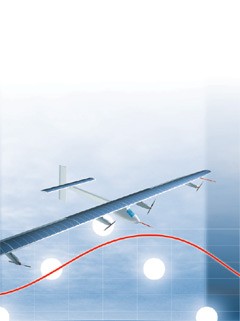
POWER SUPPLY
2,150 sq. ft. (200 sq m) of solar cells on the wings will energize four lithium batteries that will power the plane's four propellers. The aircraft will fly at around 43 m.p.h. (70 km/h).
THE PROTOTYPE
Made of low-density carbon fiber, Solar Impulse's first plane,
HB-SIA
, will be light but fragile. It will climb to 28,000 ft. (8,500 m) during the day for maximum sun exposure, and cruise at 10,000 ft. (3,000 m) at night. The pilot will fly in a tiny, unheated, unpressurized cockpit.
In a hangar outside Zurich, engineers are paring away at the obstacles to a very 21st century challenge: flying a plane around the world powered by nothing but the rays of the sun. If the Solar Impulse project goes to plan, in 2011 a gangly aircraft with the wingspan of an Airbus A380 and the weight of a compact car will attempt to circle the globe in about a month at an average speed of 43 m.p.h. (70 km/h), landing only five times along the way.
This odyssey is not merely an epic adventure. "The achievement won't be...

